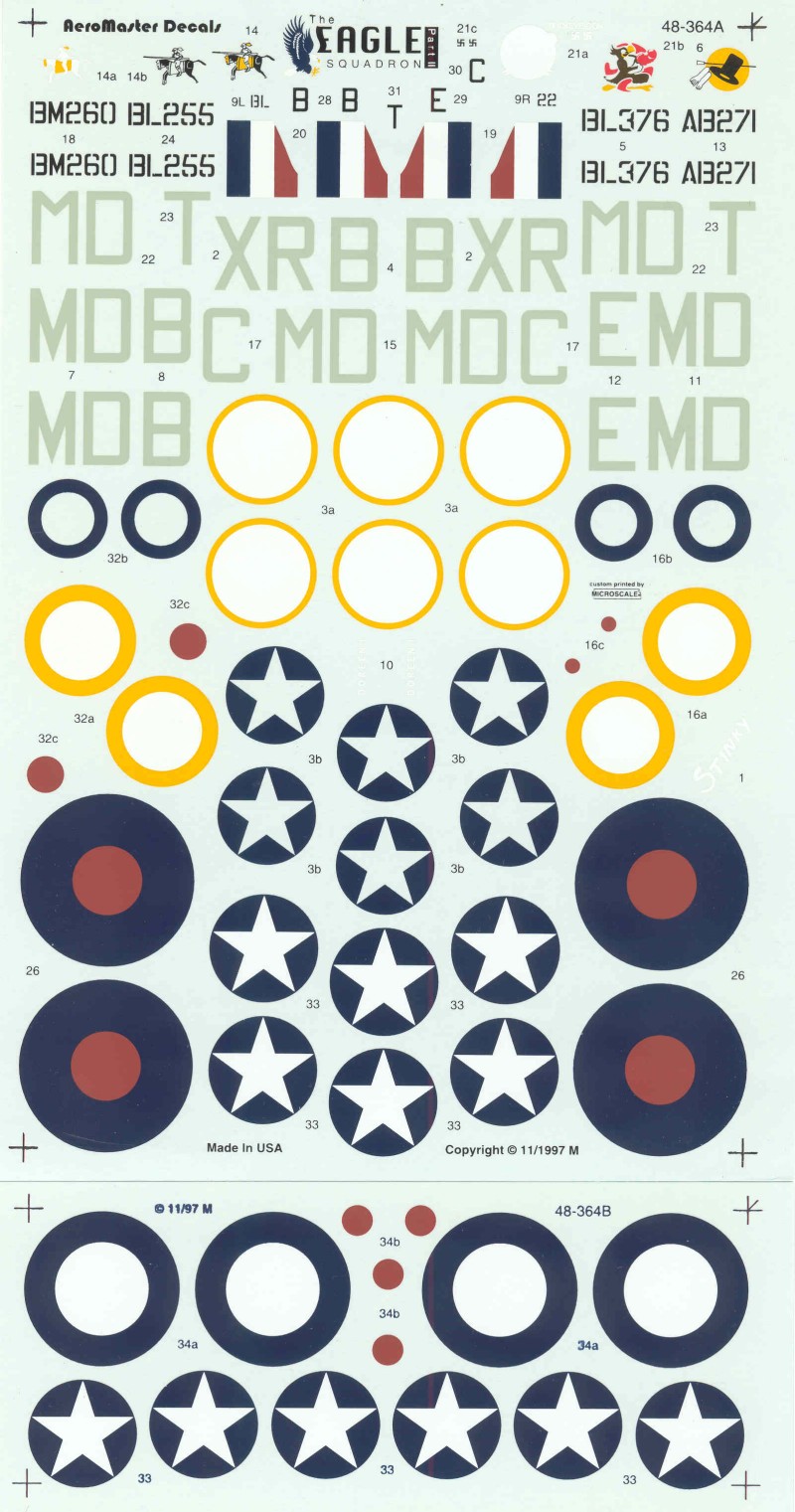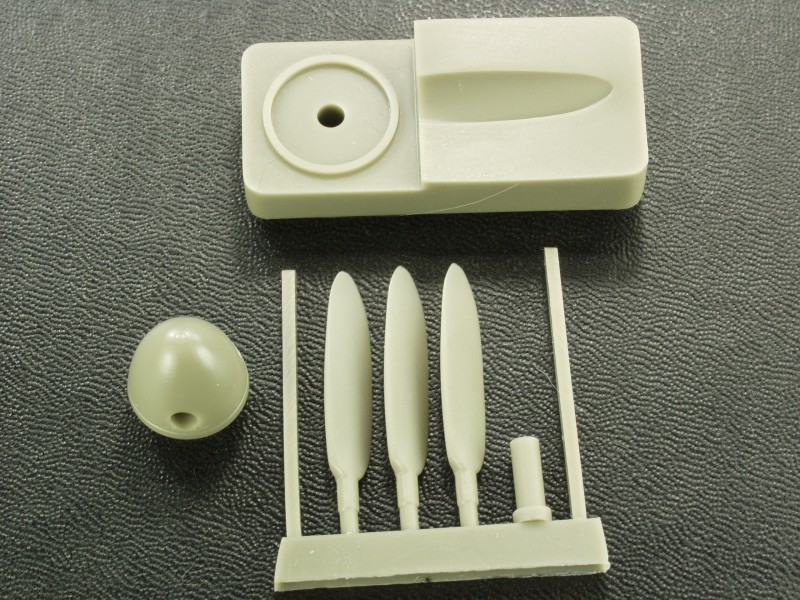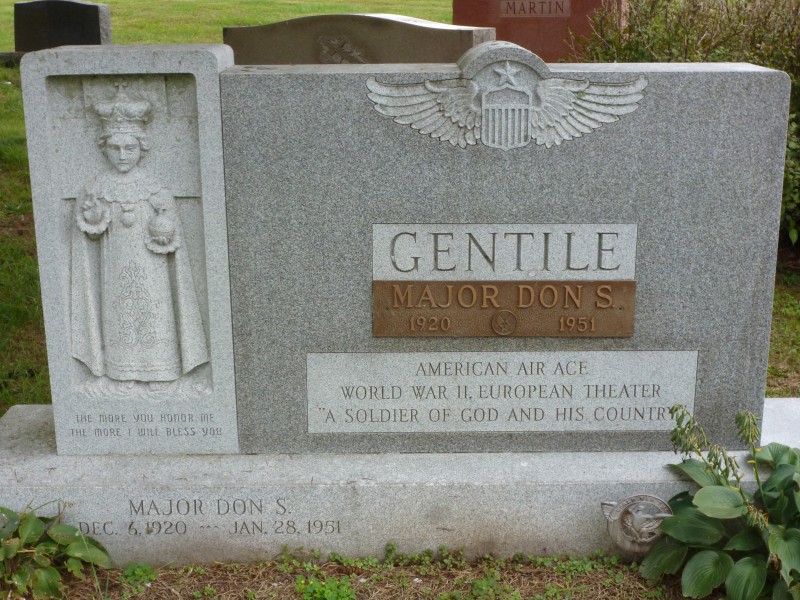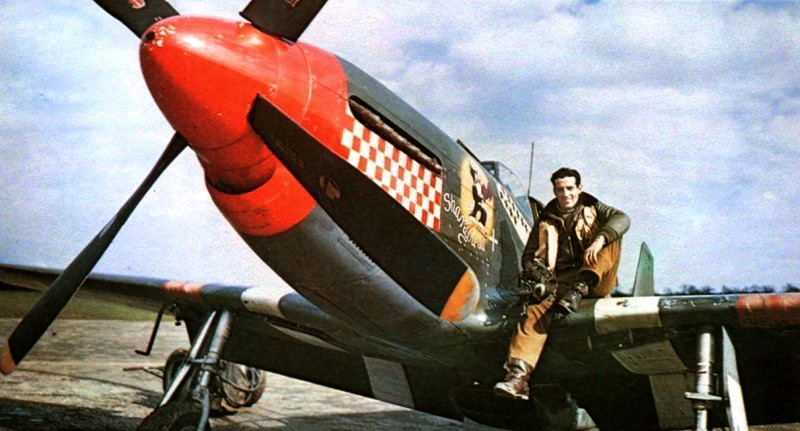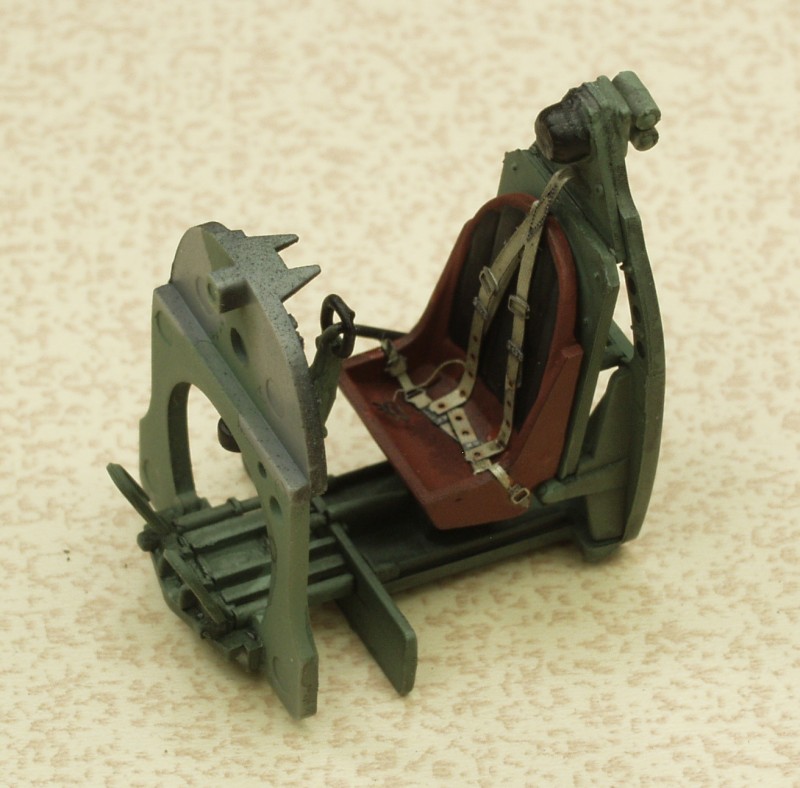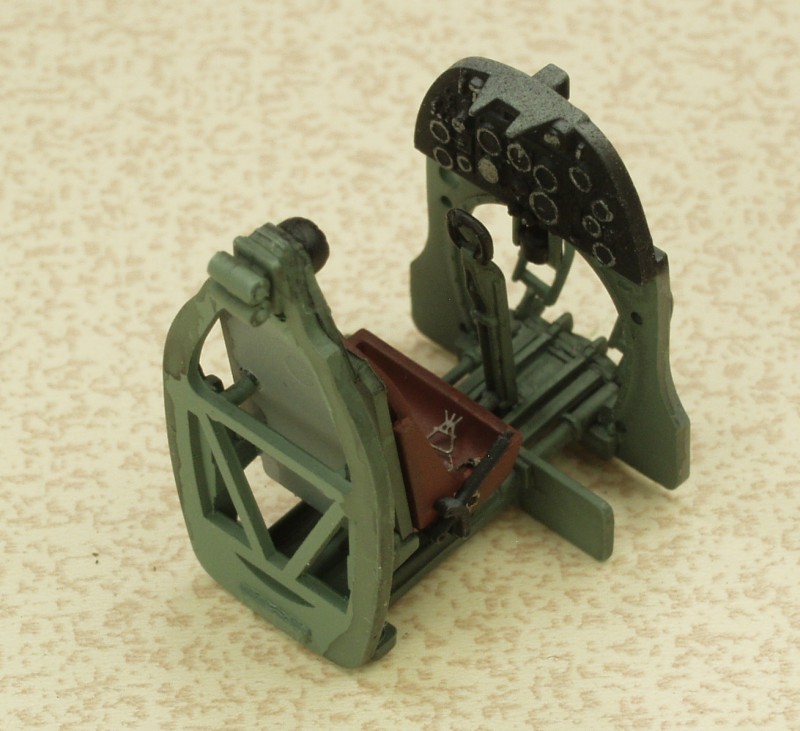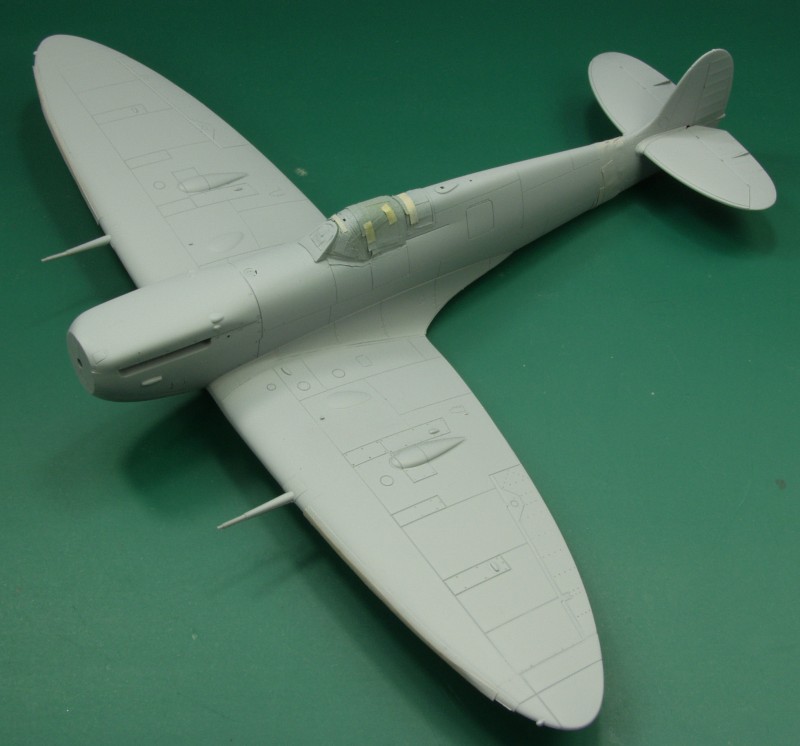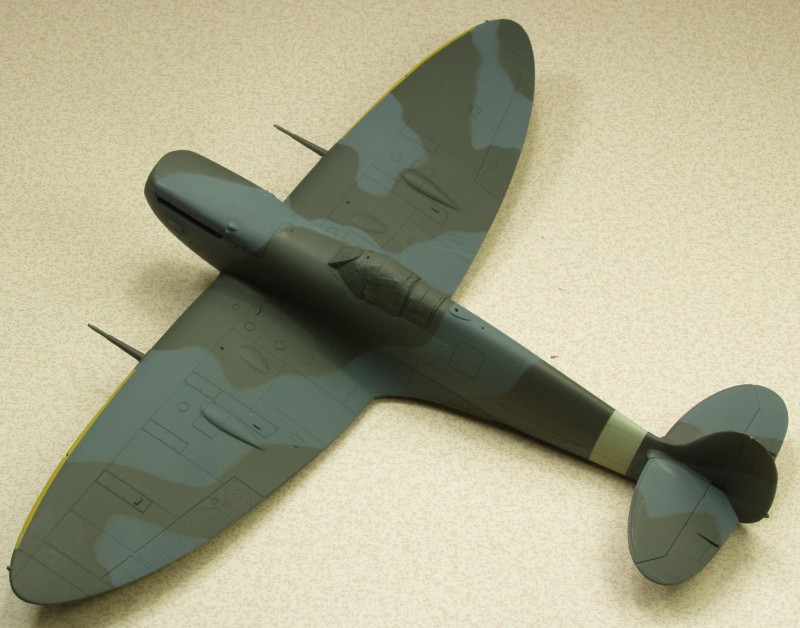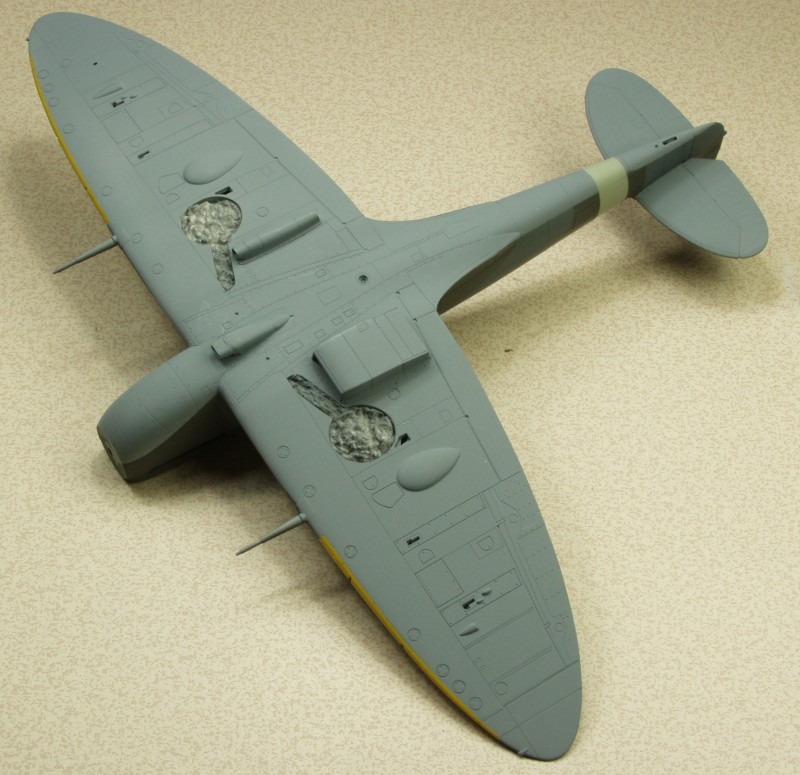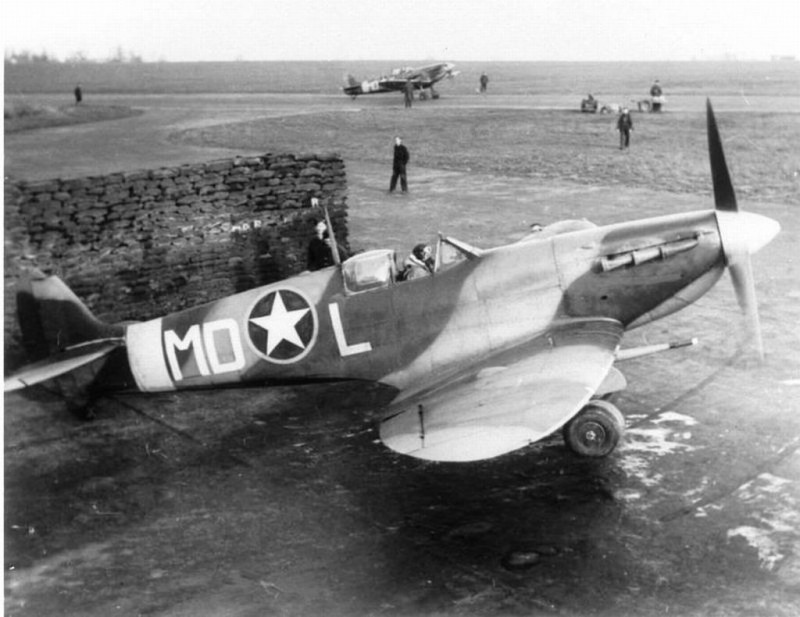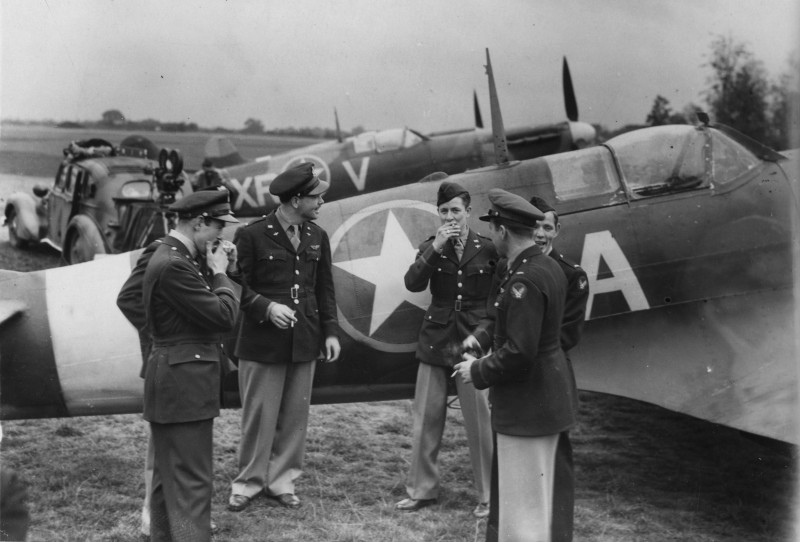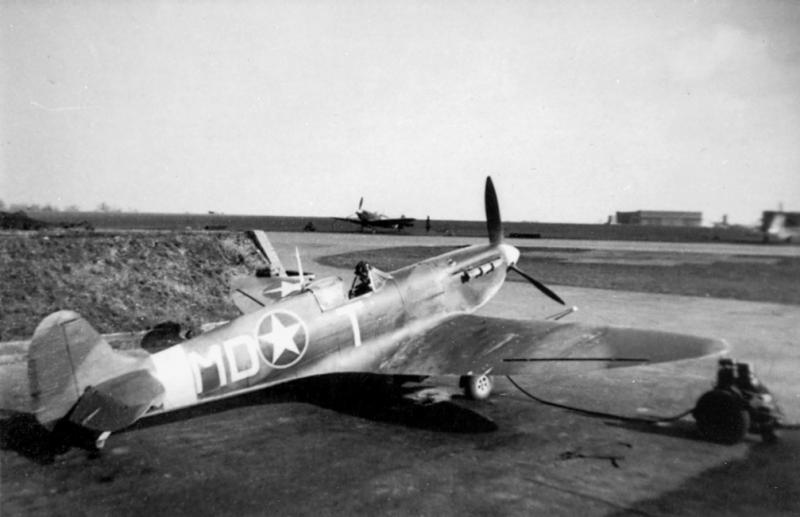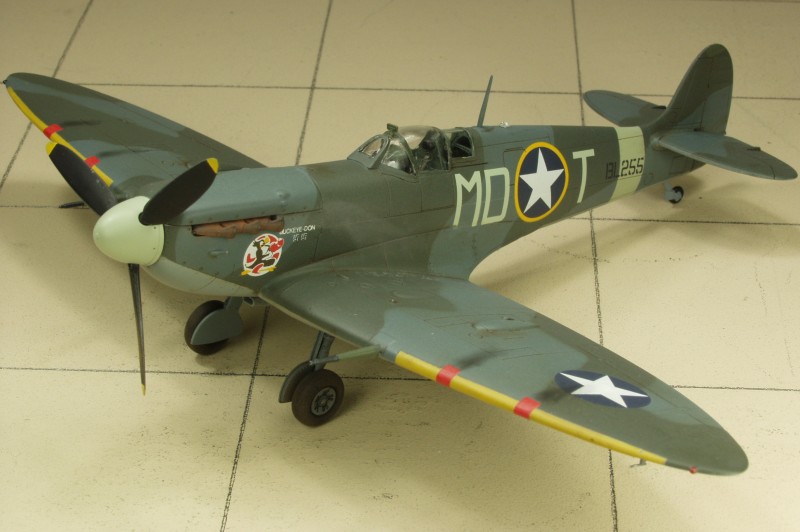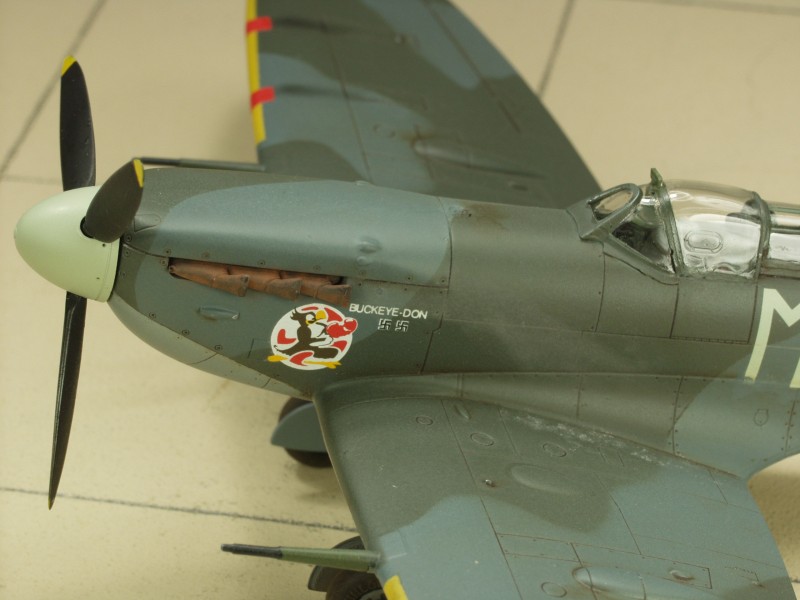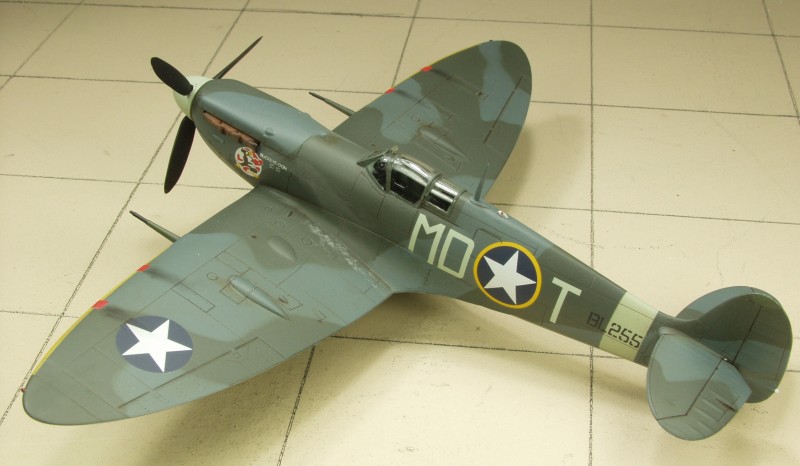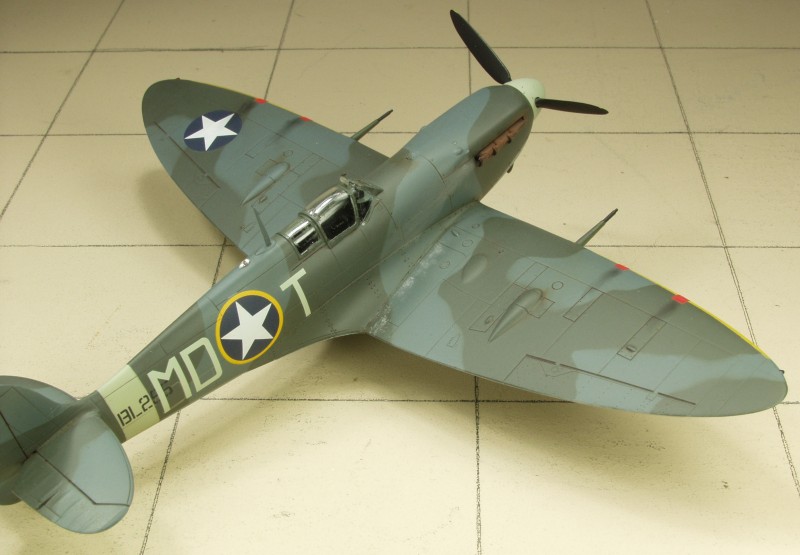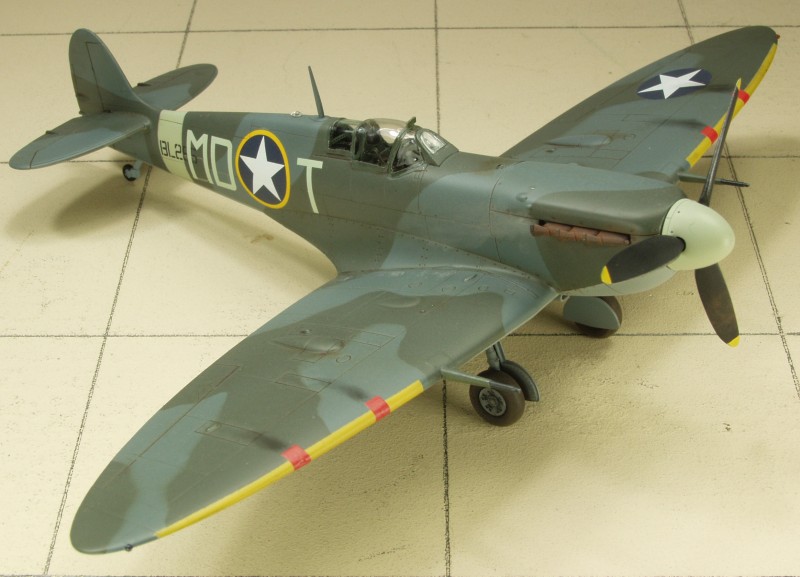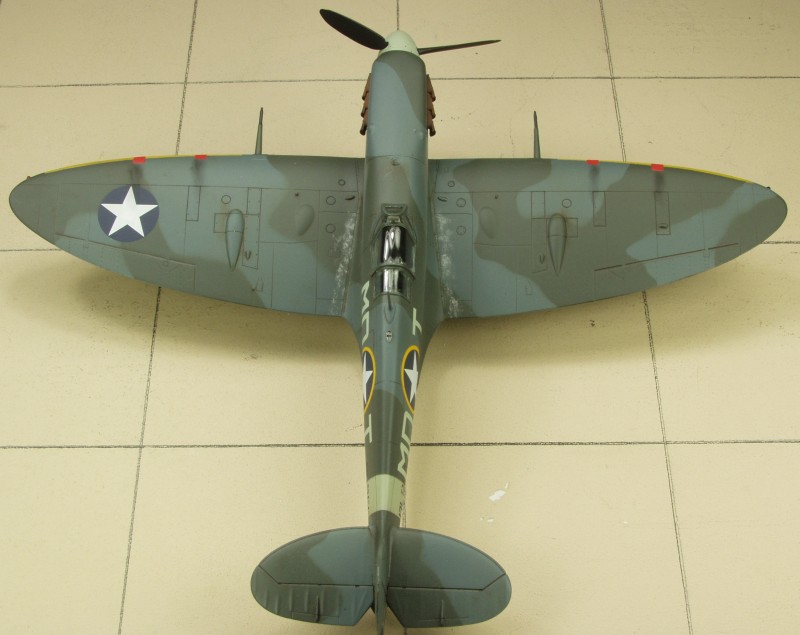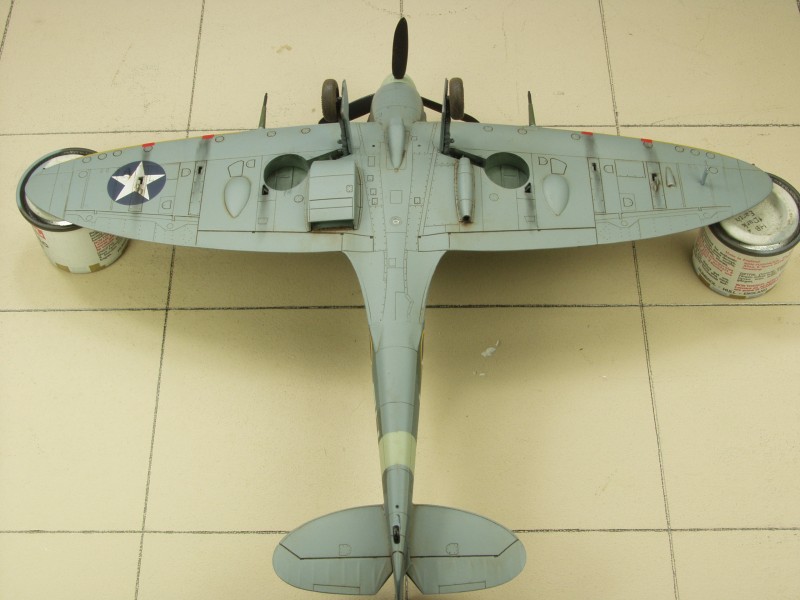Supermarine
Spitfire Mk Vb
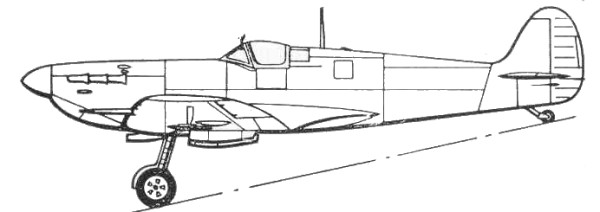
The Spitfire is one of the most famous
aircraft of the second world war and as such information about
it abounds on the Internet as well as in published works and
I'm not going to repeat it here. The Mk Vb was actually
introduced as a interim version to counter the Bf 109F but was
successful enough to continue in production, in spite of being
out classed by the Fw 190 and became the most
produced variant with a total for all three sub classes
(a, b, c) of 6,464. The difference between the three sub
classes dealt primarily with the wings, the 'a' wing built
with 8 machine guns, the 'b' with 2 cannons and four machine
guns and the 'c' which was called the universal wing could be
configured with either 8 machine guns, 4 machine guns and 2
cannon or 4 cannons with the most common being 4 machine guns
and 2 cannon.
The Kit
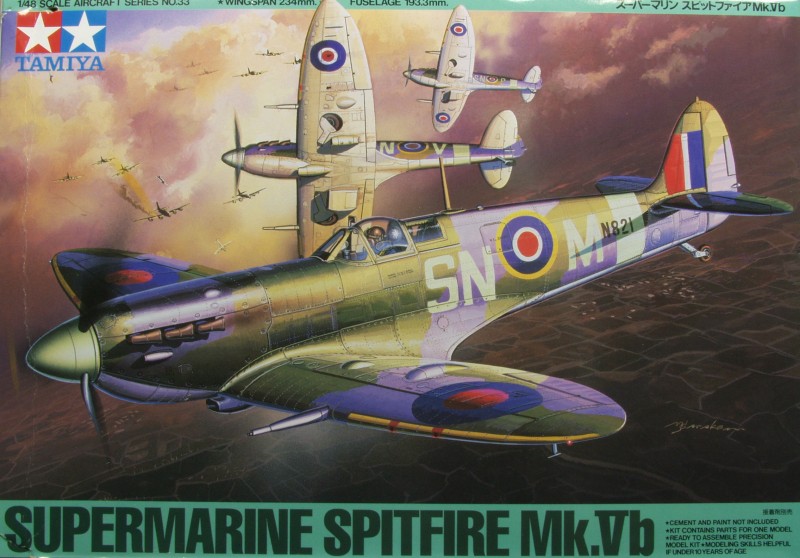
One might wonder if I made a mistake placing this aircraft in the Misc. U.S. section, well the reason being is that it is going to wear the Eagle Squadron markings of Don Gentile, which are American rather than British markings. After an exhaustive search I found an AeroMaster set with Eagle Squadron markings that included Gentile's marking, shown in the after market section. With that out of the way, on with the review.
The Tamiya kit comes in a tray type top open box of thin card stock. Inside the box the two main sprues are in separate bags with the clear parts being bagged separately and inserted in one of the main sprue bags. The kit is molded in a medium gray color and flash is all but non existent. The surface detail consists of fine recessed panel lines and quite petite recessed rivet and fastener detail. The finish is quite smooth and I found no surface anomalies on my kit.
The control surfaces are all molded in the neutral position and the fabric detail is only slightly over done. The wing tips are separate parts so as to allow building either a standard or clipped wing version. The cockpit is nicely appointed. There is structural detail molded into the side walls and the only ejector pin marks should be out of visual range once the fuselage is closed up. There are about 14 parts to make up the interior so it should look quite nice for the scale. The control panel has nice raised detail but no decal is supplied. No seat belts or harness are supplied but a reasonably detailed figure is provided. Two different windscreens are provided as well as two different canopies depending on which choice of markings you chose.
The propeller is
made up with separate blades but they are keyed to make assembly easy.
Some what unusual for Tamiya there is no polycap provided for
attaching the propeller. The landing gear provides separate hubs to
make painting easier and the tires have the manufacturers name molding
on them but it is probably a little over sized for the scale. The
tires are not weighted. The gear doors do have some light ejector pin
marks on them but they should be covered by the gear struts. There are
some holes to be drilled out during assembly so check the instruction
sheet carefully. There is also some detail on the bottom of the wing,
what I believe are stiffeners of some sort, that need to be removed
for this version. Scraping would probably be the best choice to do
this. No engine is supplied. The exhaust stacks are nicely molded but
the ends are not hollow. Lets look at the parts.
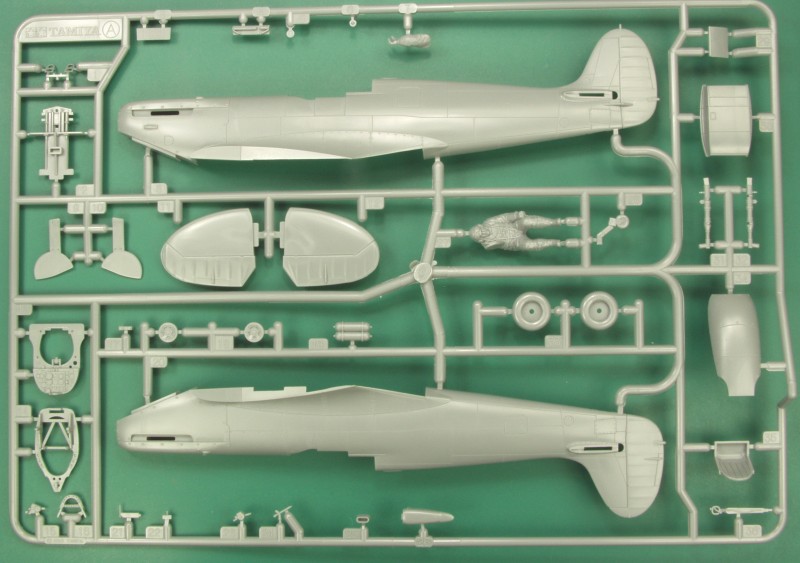
A photo showing the detail on the inside of the fuselage. A separate access door is supplied and you can see the deep recesses around the one molded to the fuselage half, so this can be cut out and displayed open if you should desire.
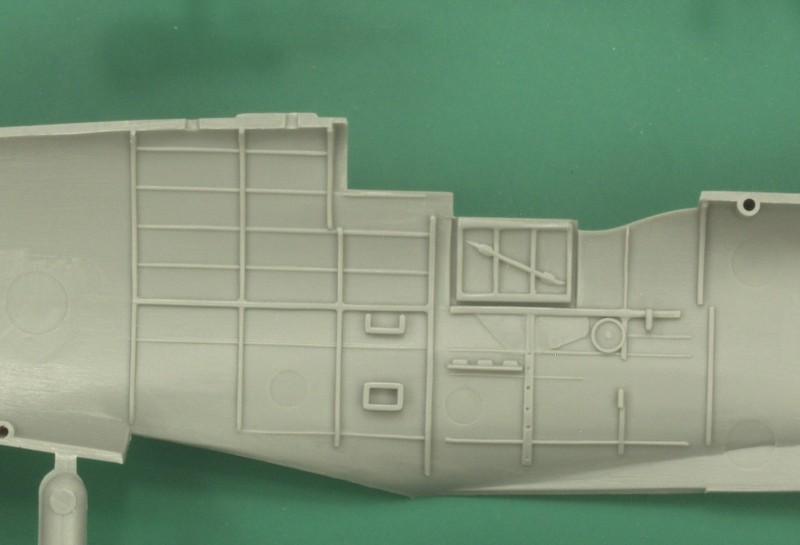
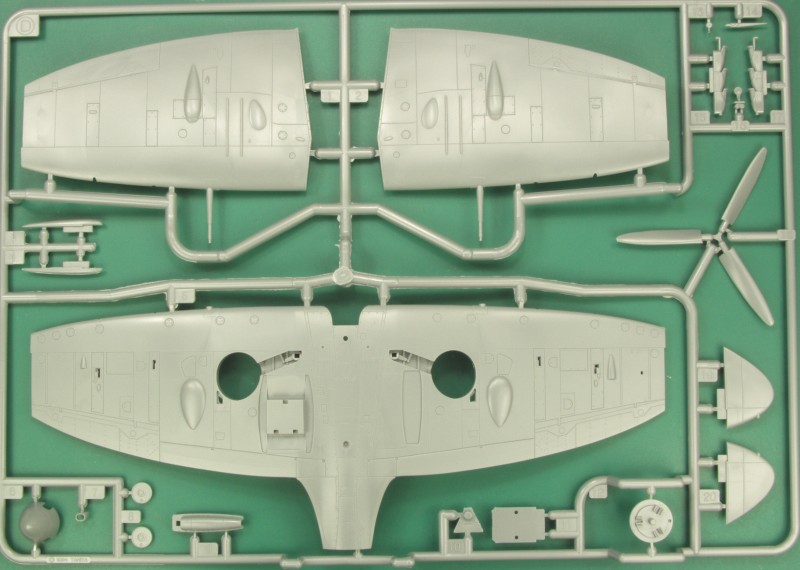
The clear parts are reasonably thin and clear but do show some optical distortion.
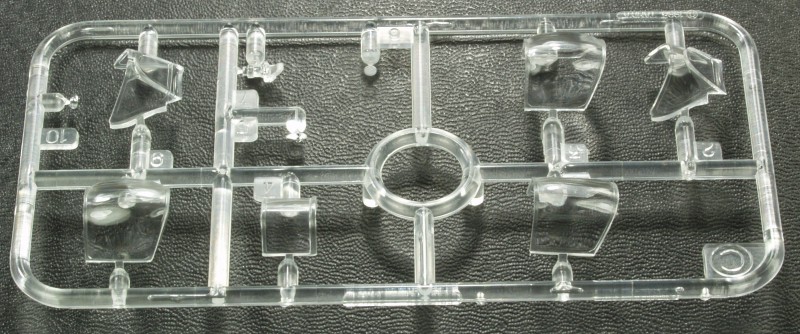
The decals have good color and are in register and appear a bit thinner than normal for Tamiya. The bottom wing roundels appear to be missing the white portion and Tamiya has supplied a separate sheet with white circles to place under all the roundels which makes me wonder if they were concerned about color bleed on the other roundels. The two sheets provide markings for three aircraft; One from No. 243 Squadron, one from No. 316 Squadron and one marked for Fighter Command Wing Commander A.G.Malan.
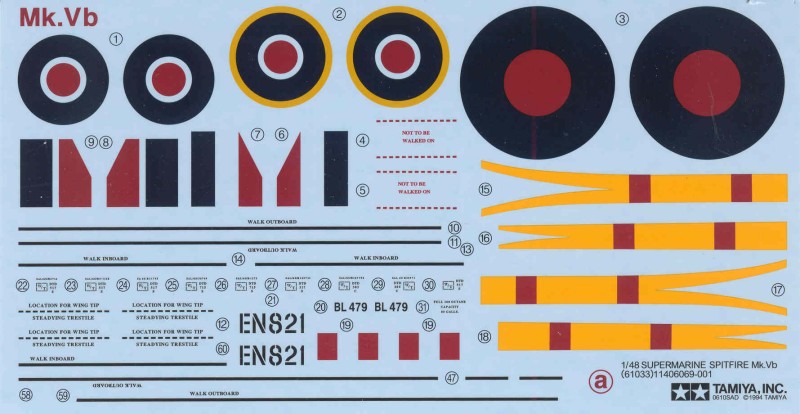
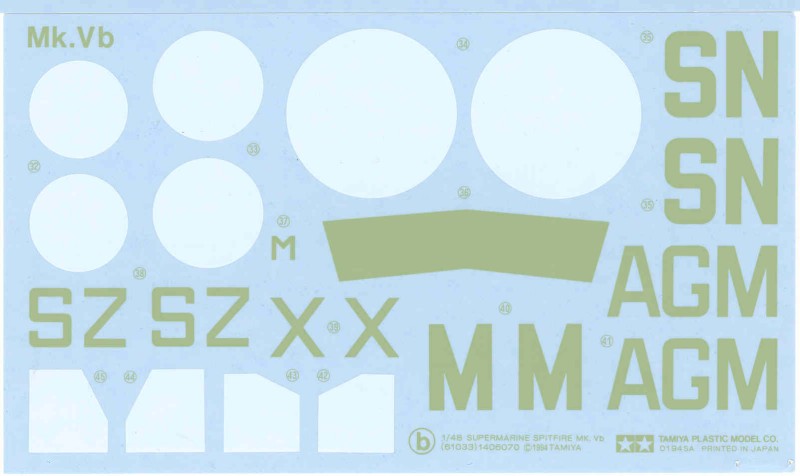
The instructions are on a long sheet folded to create 8 A4 sized panels. The first panel has history in multiple languages, the second has a half page of tools and general building instructions and the other half starts the assembly diagrams. The next four panels are all assembly diagrams in 11 steps with some basic painting instructions at the end. The last two panels have detailed painting and marking diagrams. Paint call outs throughout reference Tamiya paints and their annoying paint mixing instructions. No parts map is included but the parts count is low so this shouldn't be an issue.
After Market Goodies
First of all the AeroMaster decal set, their number 48-364A. The set includes markings for 5 aircraft, one from the 334th fighter squadron, two from the 336th fighter squadron and two from the 133 Eagle Squadron. The decals are dated from 1997 and are no doubt out of production. I was lucky to find a set at a dealer. The decals are well printed with a semigloss finish, in register, thin with minimal excess film and appear to be sufficiently opaque. Some of them due require stacking. No other name is on the sheet itself but they look like they could have been done by Microscale or Cartograph.
